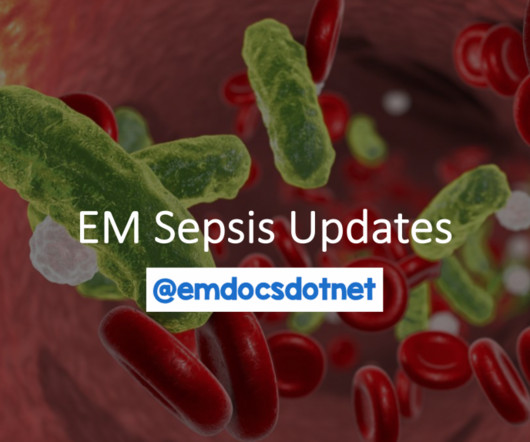The CLOVERS Trial
Taming the SRU
MAY 5, 2023
Despite the complexity and heterogeneity of patients with sepsis, there have been few interventions which have been demonstrated to decrease mortality: early antimicrobial and fluid administration (Levy, Evans et al. 2018, Kuttab, Lykins et al. 2019, Evans, Rhodes et al. 2021, Im, Kang et al. vs 33.2%; OR, 0.42; 95% CI 0.32-0.55;














Let's personalize your content